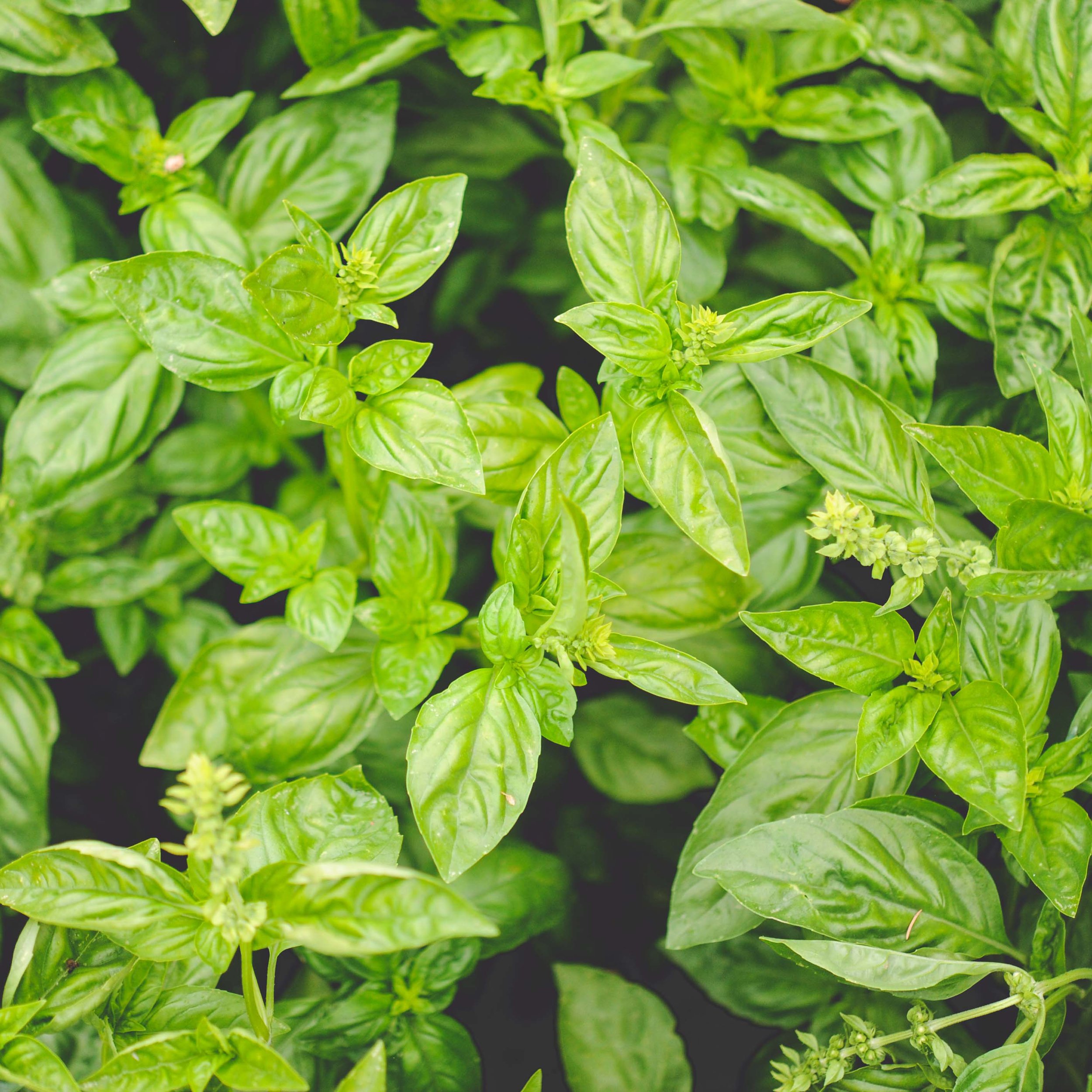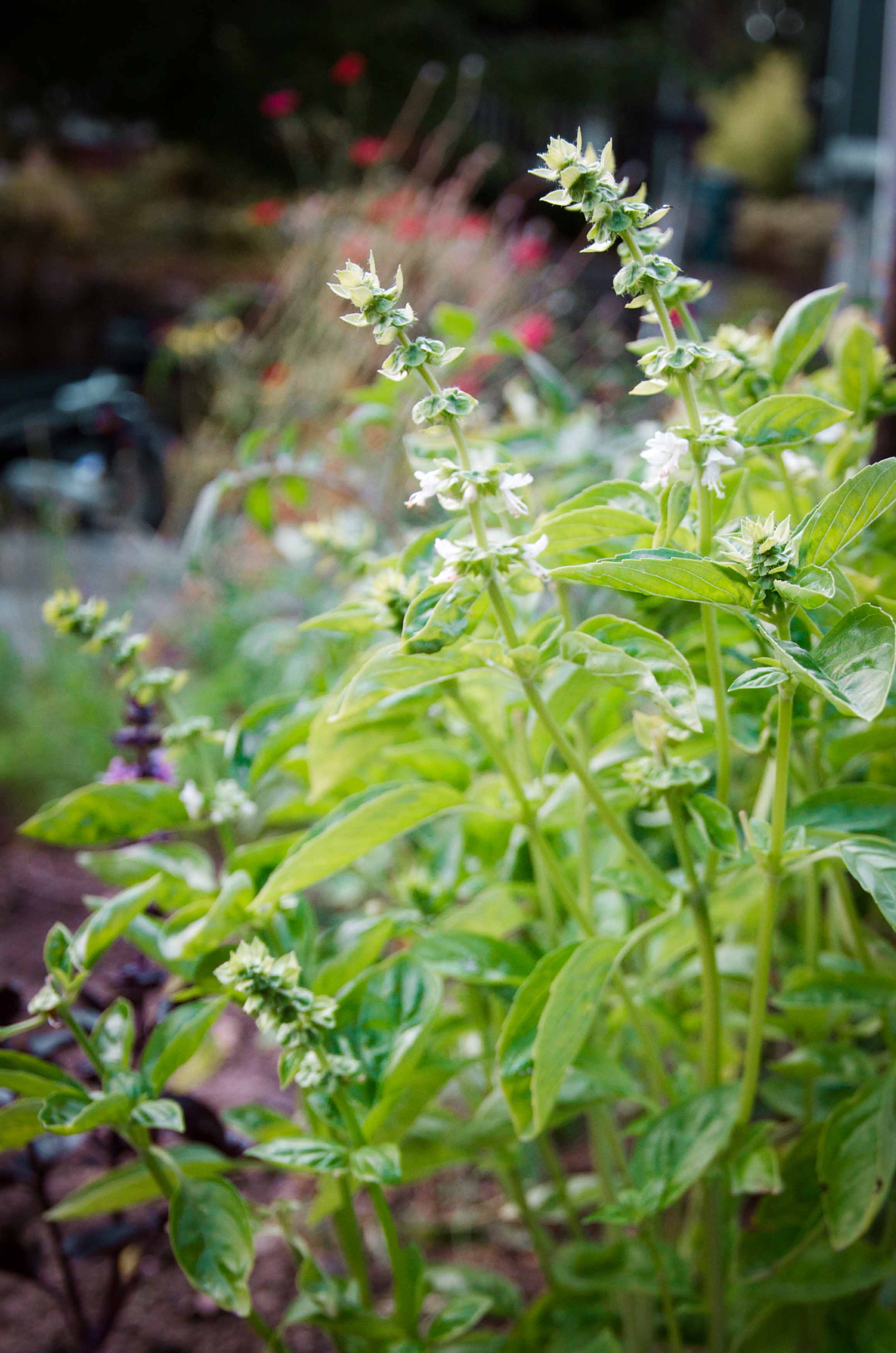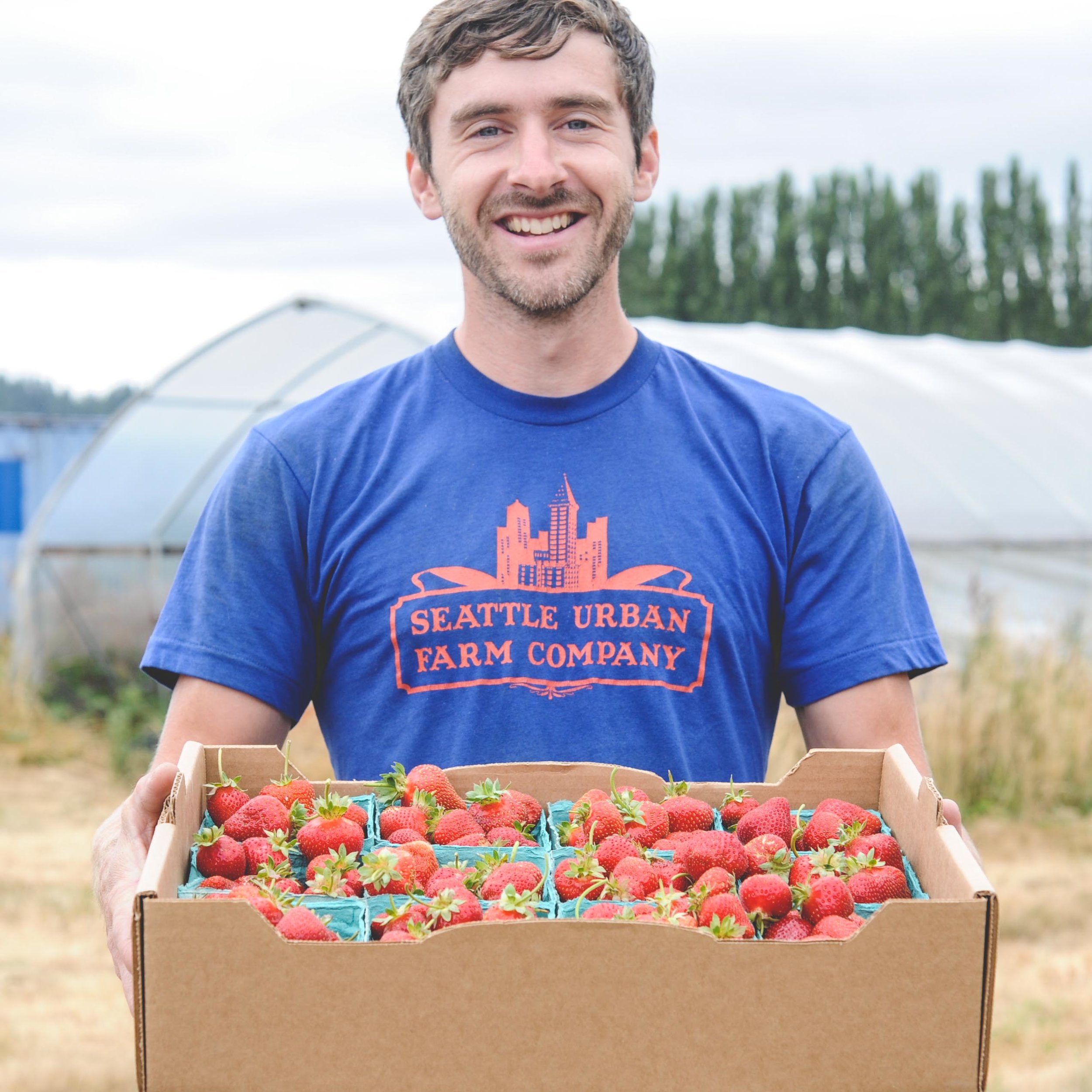Basil is one of those crops that almost everyone wants to grow. It's relatively versatile and it is one of the most productive crops per plant that you can grow in your garden. In this episode Hilary is joined by former Seattle Urban Farm Co. colleague and farmer, Skip Mackintosh to discuss their time-tested techniques for making the most of the space you've dedicated to basil.
HOW TO LISTEN:
Subscribe in iTunes , Stitcher, or any of your favorite podcast players to have new episodes sent directly to your device.
Listen right now in your browser by clicking above.
SHOW NOTES:
Basil needs pretty warm conditions and a ton of light to get started, I would not recommend trying to propagate this crop at home unless you are a relatively experienced nursery grower. It is definitely not the easiest crop to start out with in the home nursery.
Wait to plant basil until temperatures are consistently above 50 degrees F, including at night!
Cold damage on basil comes in a few forms: often you will notice gold or brown colored spots on the leaves, which then after being damaged in this way will begin to rot. If you have otherwise healthy plants, keep an eye out for discoloration like this and remove the affected parts if you can. Cold nights can also lead to stem rot and fungal growth on the stems of the plant. A common site in spring or late in the fall is a basil plant with dark coloration on the stems which quickly leads to grey mold and usually a dead or severly damaged plant. In Seattle, we don’t plant basil outside in the garden until June, which seems really late in the spring, but Basil grows very quickly, so it is possible to get in a great harvest even if you get a late start.
One key to success with delicate crops like this is the willingness to replant if plants get damaged by cold weather or pests.
Regular harvesting is key to a productive basil plant! I recommend using a pair of scissors to snip back the top of each stalk on your basil plant. What you'll notice is that, if you snip back the stem just above a leaf node, the stem will branch out from both sides of the node, producing two stems from one (see top photo!).
Left to right: Flowering basil and trimming basil
Like what you hear? Please share our podcast with a friend. Subscribe on iTunes or your favorite podcast player so you never miss a beat. And we'd really appreciate you showing us some love by leaving a rating and review on iTunes.
Have a topic you'd like see us dig in to? Leave us a note in the comment section below or #EBpodcast on Instagram and Twitter!
Your support is what keeps this podcast going! Any amount helps, so consider support us by making a one-time contribution:
More about this weeks guest expert:
Skip worked at Seattle Urban Farm Co for over 4 years. Skip spent his first few years at SUFCo installing edible gardens, and later moved on to managing our 4-acre restaurant farm outside of Seattle. Before working with SUFCo he worked at Let Us Farm, a farm located in Oakville, WA that specialized in lettuce and basil.
About the Host:
Hello, I’m Hilary Dahl. Outside of this podcast, my job is to help beginning and experienced growers create beautiful and productive gardens. I have the unique experience of working in on a wide range of projects, from small backyard garden plots to multi-acre vegetable farms. I also work in my own garden every day when I get home. This podcast is an opportunity to discuss seasonal garden topics and share the the joy of growing your own food.






